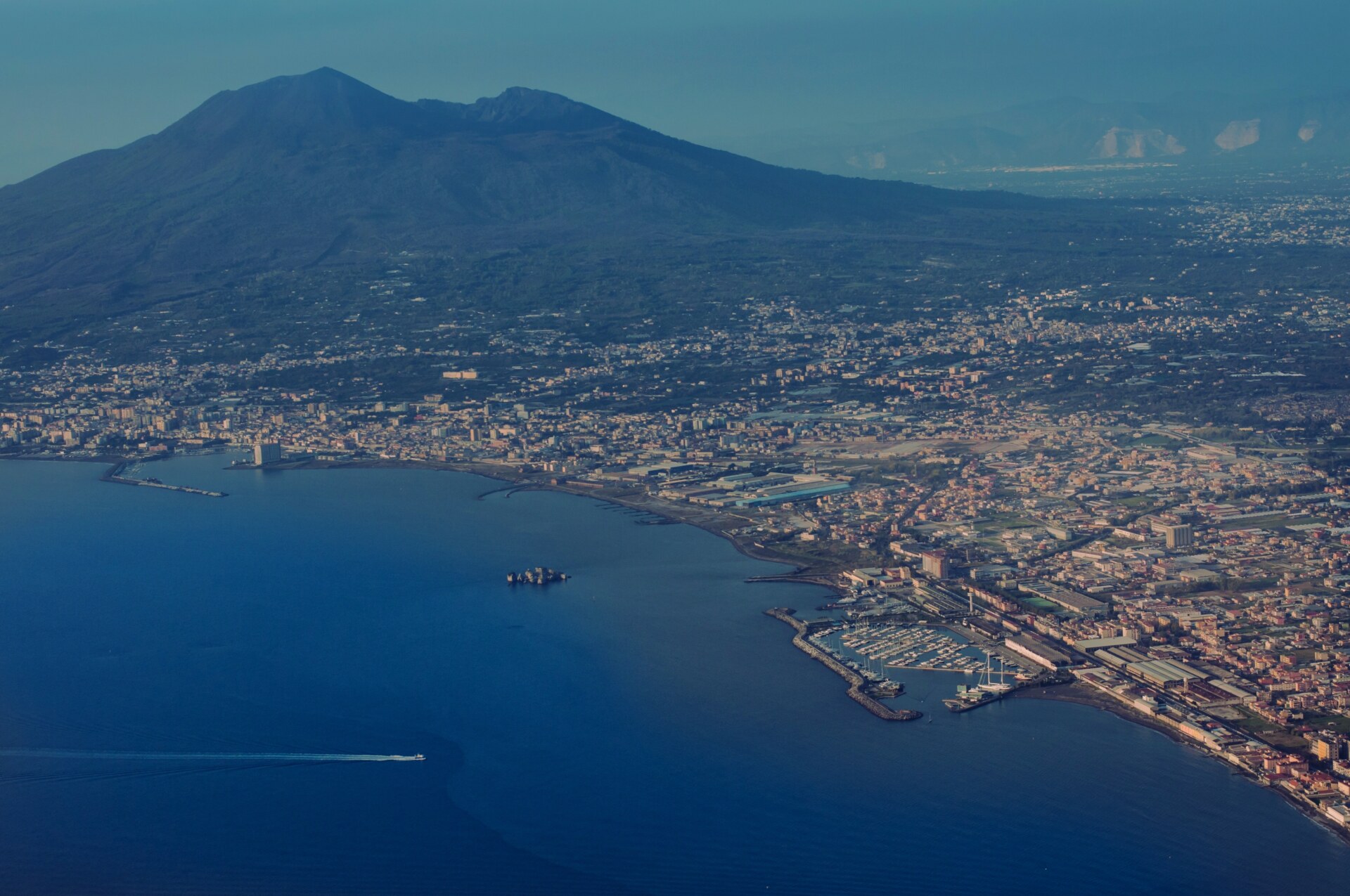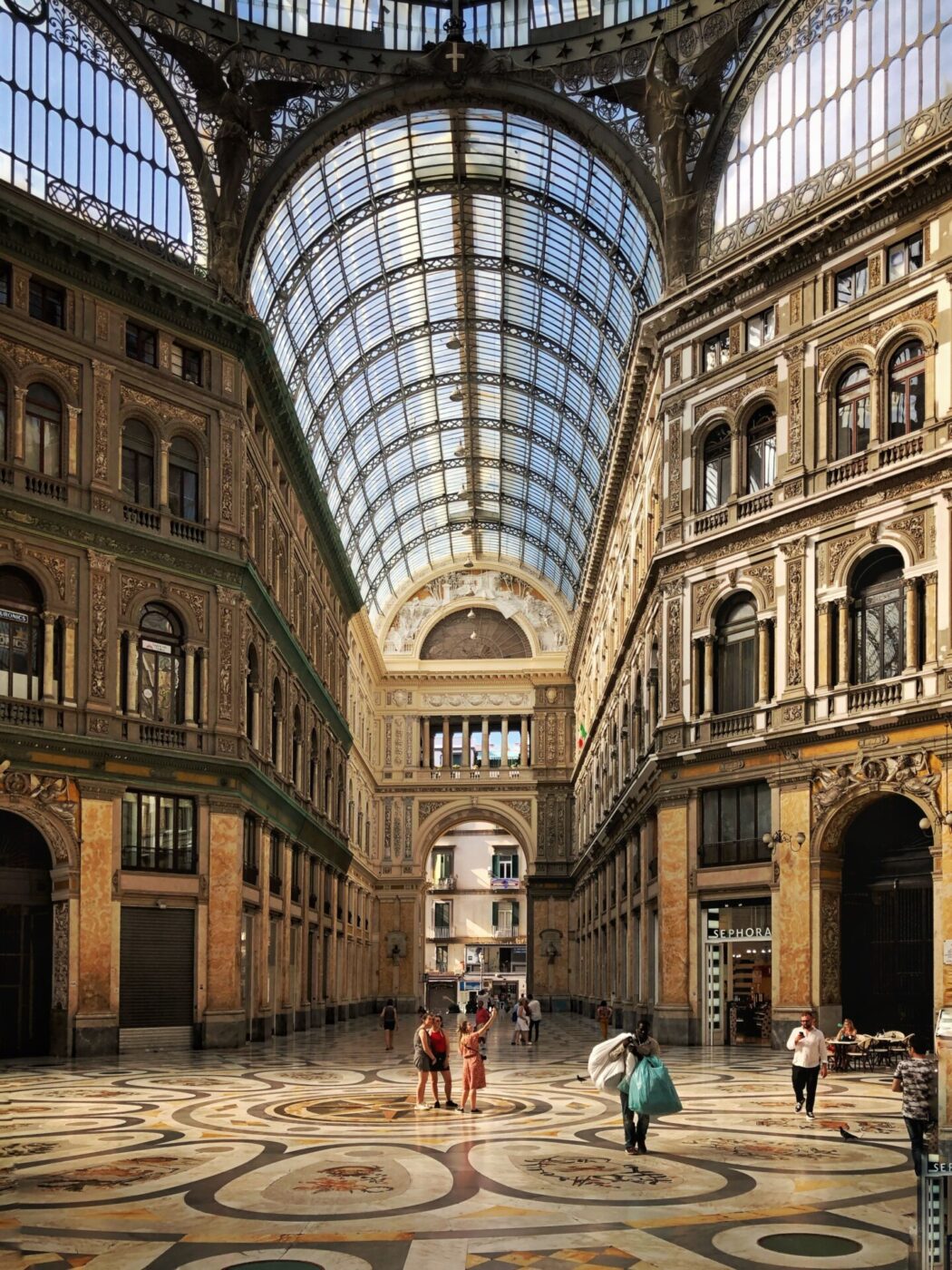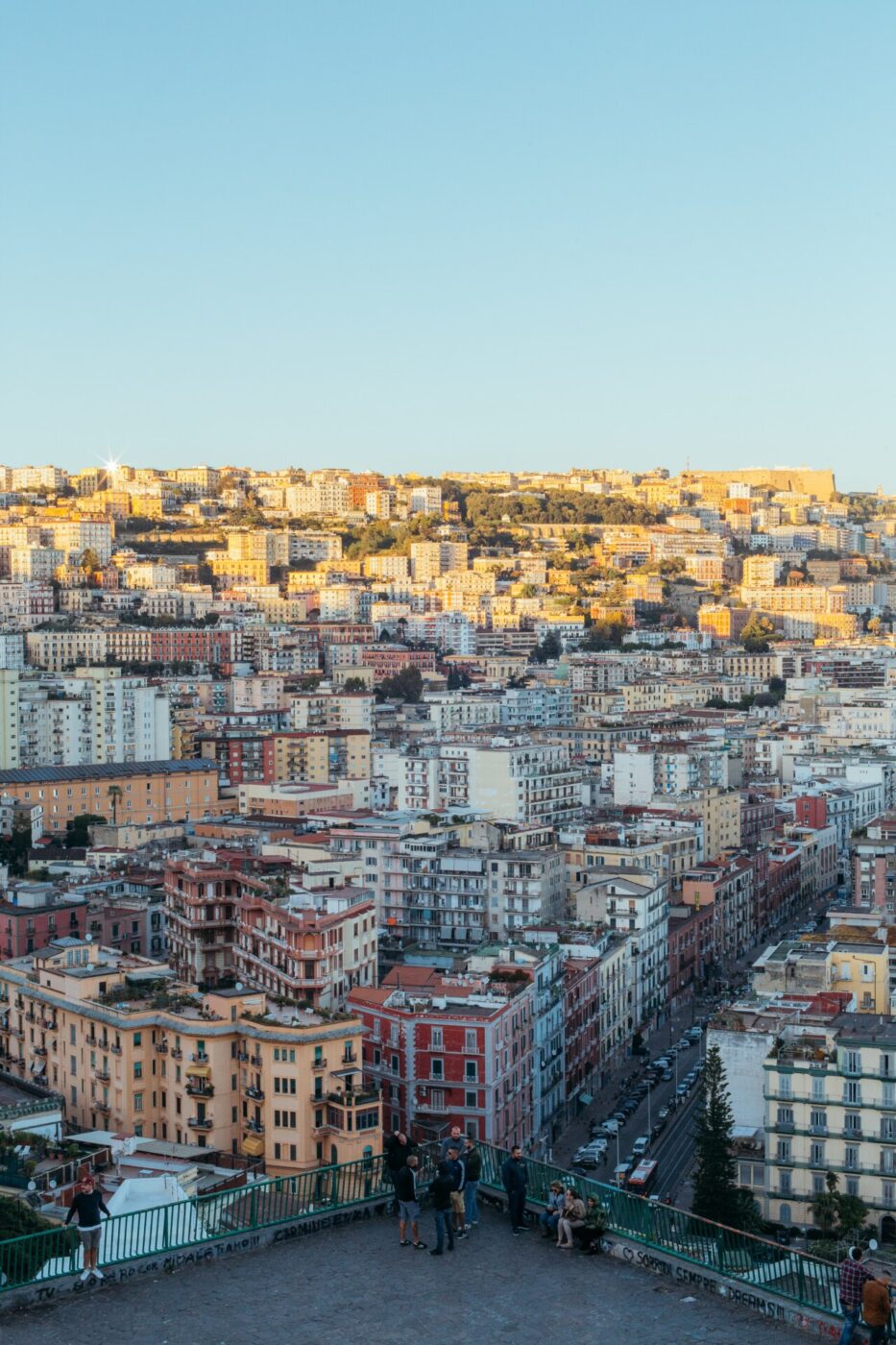Of all Italian cities, Naples is probably the one whose life is most full of contrasts. And if there’s anything you should know about contrast, it’s that it looks good on film… as well as in theater.
Ever since the post war period, Naples’ great tradition of theater, reclaimed and refined by playwright Eduardo de Filippo, has often been transposed on the big screen. Eduardo’s brother Peppino frequently acted next to national comic hero Antonio de Curtis (also known as Totò), giving rise to an endless list of films featuring the duo.
Set in Naples in 1890, Miseria e nobiltà (Poverty and Nobility, 1954) is based on a play by Eduardo and Peppino’s father Eduardo Scarpetta. The film features one of the most enjoyable scenes of Italian cinematography: famished Totò scoffing down fistfuls of steaming spaghetti while dancing on the table and shoving pasta into his pockets.
It’s an image of Naples that, however clichè, still enjoys great popularity.
The extreme humanity of the city’s population, its exuberant enjoyment of life, the traditions and the superstitions have all made good subjects for screenplays–the latter especially in Paolo Sorrentino’s E’ Stata la Mano di Dio (The Hand of God, 2021), Best International Feature Film nominee at the last Academy Awards.
Even 68 years after its release, Vittorio de Sica’s L’oro di Napoli (The Gold of Naples, 1954) is a graceful and light essay about Neapolitans’ most noble skill: l’arte di arrangiarsi (the art of getting by). Each of the six episodes composing the film features a leading Italian actor interpreting characters and situations specific to the city. Totò plays a pazzariello–a street artist half-way between a mime, a singer and a human billboard–who is exploited by a guappo, a local criminal. Sofia Loren is an unfaithful pizza-fritta seller; Vittorio de Sica is a count with gambling issues; Eduardo de Filippo plays o’ professore, an educated man who gives advice to his neighbors for a few pennies.
Some decades later, the rightful title of heir to Eduardo de Filippo and Totò went to Neapolitan comic actor Massimo Troisi, who debuted as a director in the early 1980s, conquering audiences and critics. Troisi’s style of comedy, powerfully in Neapolitan dialect, interspersed pauses and mumbles, underlined the communication difficulties of a whole generation. His character, a sort of Neapolitan Woody Allen, placed himself as far away as possible from the macho-culture typical of the South Mediterranean.
No grazie, il caffè mi rende nervoso, (No Thanks, Coffee Makes Me Nervous, 1982), Scusate il ritardo (Sorry for the Delay, 1983) and Pensavo fosse amore… Invece era un calesse (I thought it was love, but it was a barouche, 1991)–all set in Naples–present Troisi as the perfect anti-hero: helplessly neurotic, pathologically timid, but also sensitive and kind.
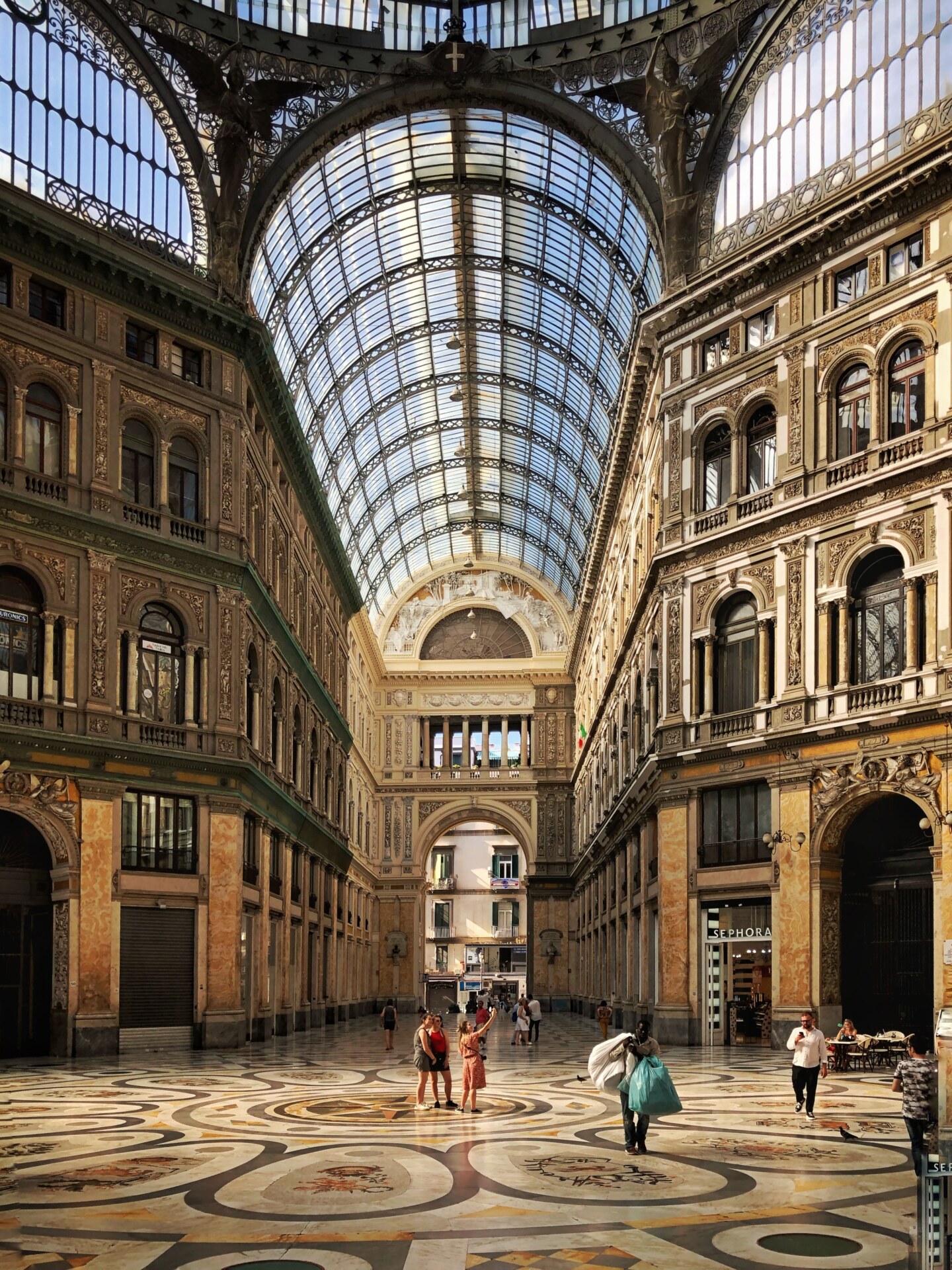
Unfortunately, Naples isn’t just about having a good laugh. The city has been historically plagued by poverty and systematic criminality, which quickly push away any stereotype like pizza, pasta and mandolino. It’s the worst contrast of all.
Although Liliana Cavani’s La Pelle (The Skin, 1981) doesn’t match the complexity and the narrative strength of Curzio Malaparte’s semi-autobiographical novel on which it’s based, the film is still a laudable effort.
Cavani closely follows the grotesque imagery described in the book–which was rejected by Neapolitans and banned by the Church when it was first published in 1949–and recreates Naples’ months of chaos, hunger and desperation that followed the liberation of the city from Fascism and the arrival of allied troops in the early 1940s. Italian liaison captain Malaparte, played by Marcello Matroianni, moves around the city–from its slums and brothels to the decadent palazzi of the aristocracy and the war rooms–with cynicism as the only arm he’s got to defend himself.
The trauma of WWII experienced by the local population is also depicted in an episode of Roberto Rossellini’s neorealist masterpiece Paisà (Paisan, 1946), which stages the not-so-friendly interaction between an orphaned scugnizzo, a street urchin, and an Afro-American soldier; and in Lina Wertmüller’s Pasqualino Settebellezze (Seven Beauties, 1975), which revolves around survival in a concentration camp. The film won Wertmüller an Academy Award nomination for Best Director–the first woman ever nominated in such a category.
Matteo’s Garrone’s Gomorra (Gomorrah, 2008) is based on the sensational book of the same title written by Roberto Saviano in 2006, reporting the many horrors of Camorra, the historical criminal organization based in Naples. Many scenes are shot in the city’s suburb of Scampia, known to be a hotspot of organized crime and drug dealing. The film, which started its own sub-genre of TV series, is a bitter reflection on Naples’ powerful organized crime and on that part of the population that connives with them.
Thrillers in Naples can also go incredibly wrong. Ferzan Özpetek’s Napoli velata (Naples in Veils, 2017) doesn’t spare us anything: childhood traumas, morgues, archaeology trafficking, homicides, mistaken identities, poisonings, family secrets and mysteries… there’s even a duo of evil lesbians.
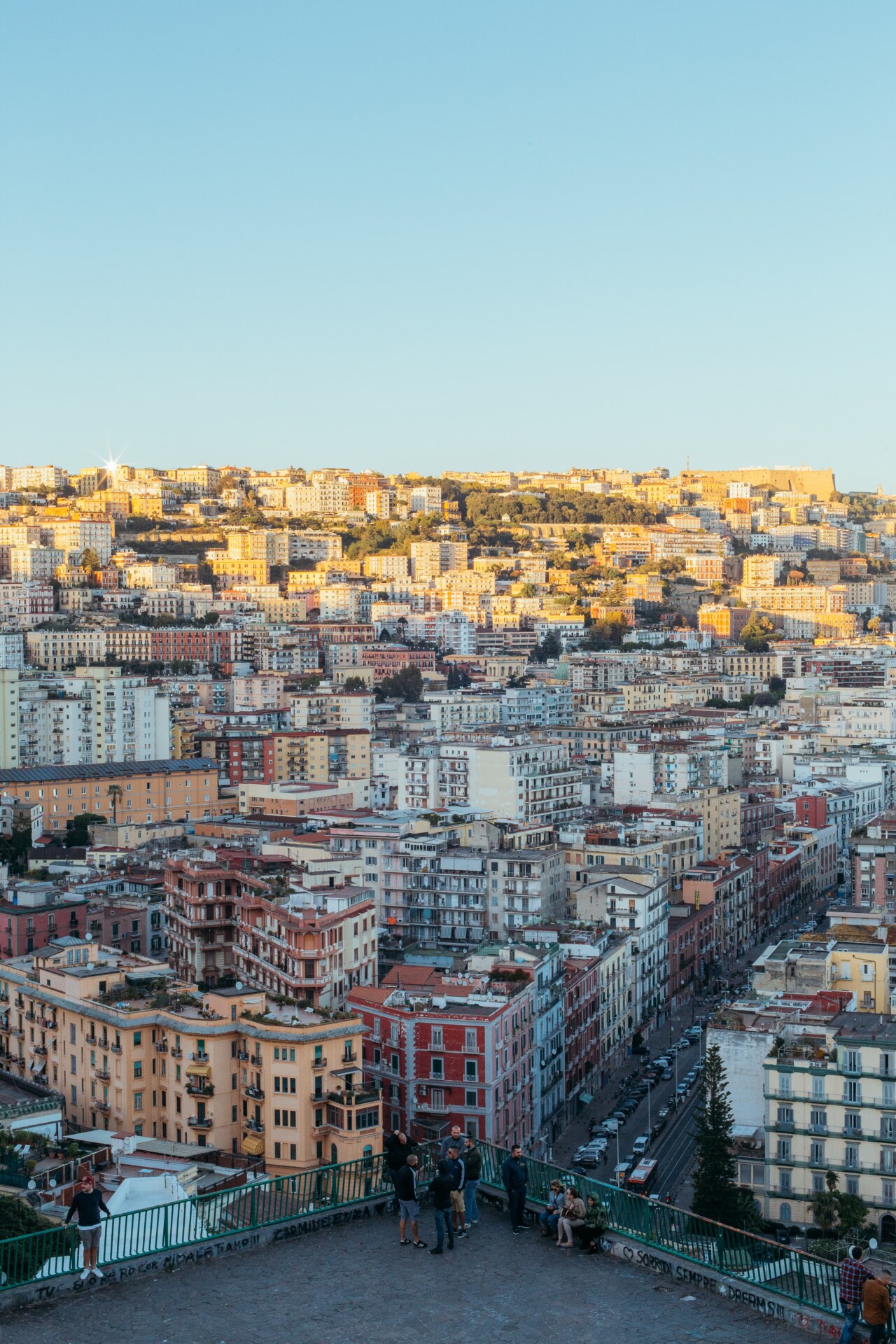
Not surprisingly, the film ends up being a confused exercise on the theme “Naples & Crimes”. Besides homages to the city’s traditions, from femminelle to witchcraft, the only thing that saves the movie is the city itself. Once you’ve overcome the embarrassing feeling of watching a tourism commercial, naming the many locations in the background becomes an entertaining distraction: the archaeological museum, the Ospedale degli Incurabili, Castel Sant’Elmo, and lastly, the Cappella Sansevero, which hosts the famous hyper-realistic sculpture of a Veiled Christ.
As usual, the ultimate consolation comes from technicolor: Melville Shavelson’s It Started in Naples (1960) stars Clark Gable next to Vittorio de Sica and Sofia Loren at the height of her career. During his last appearance on the big screen, Gable plays a distinguished Philadelphia lawyer who goes to Naples to settle the estate of his late brother… and inevitably falls in love with a night-club dancer.
The predictable plot, the many clichés of the culture-clash movie and the romanticisation of pretty much anything Italian will probably make many cringe. But some enjoyable scenes and lines put things right, including Gable brushing his teeth with whiskey because he doesn’t trust tap water, and this quarrel between him and Loren: “You really should learn to speak Italian, it’s not very difficult,” she teases him. “I know, the tough thing is to learn to think Italian!” he replies. How can you blame him!
If you’re not fond of romantic comedies, you’re allowed to skip to the film’s essential scene: Loren dancing and singing “Tu vuò fà l’americano” in a night club in Capri is the Italian answer to Rita Hayworth singing “Put The Blame On Mame” in Gilda. Less glamorous, maybe, but way more fun!
